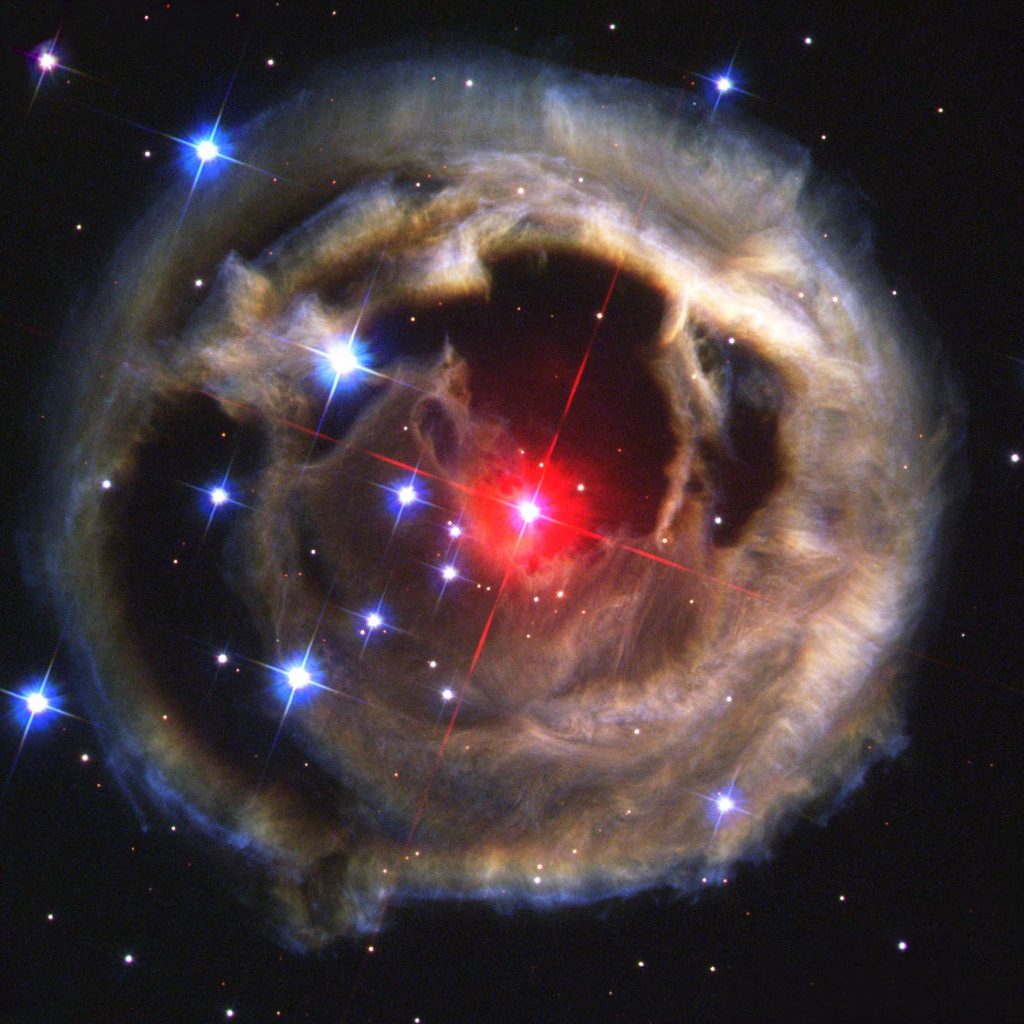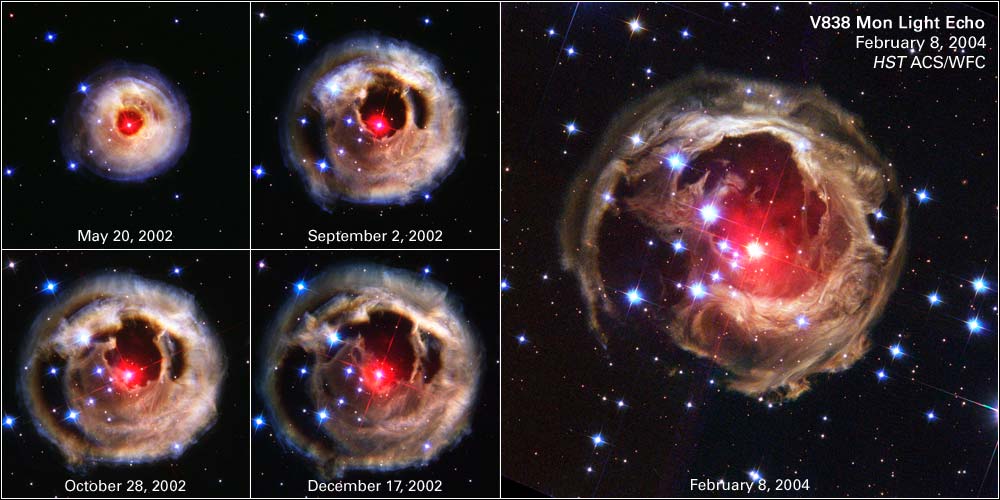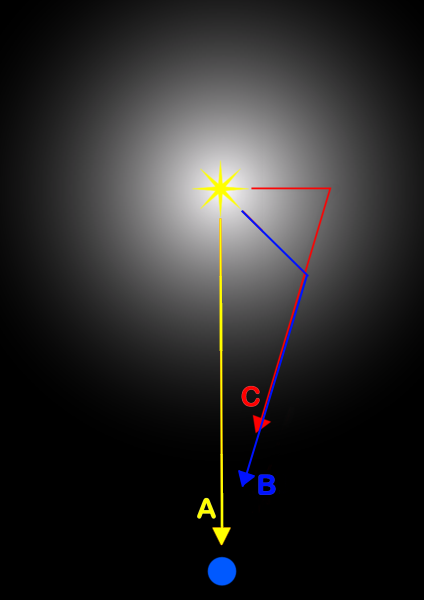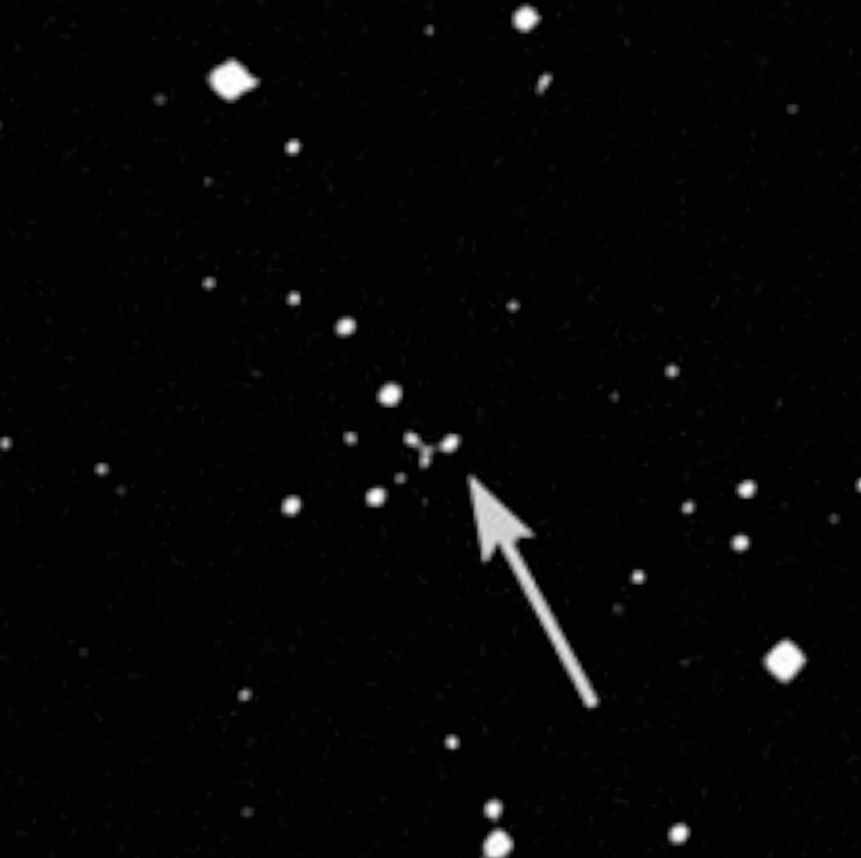V838 Monocerotis a spectroscopic binary star system (a binary star evident from the Doppler effect) in the constellation Monoceros about 19,000 light years from the Sun. Identified as a luminous red novae, thought to have been [caused by the] merger of two stars within a triple system.

Credit: NASA/ESA

A light echo is a physical phenomenon caused by light reflected off surfaces distant from the source, and arriving at the observer with a delay relative to this distance. The phenomenon is analogous to an echo of sound


In the case of V838 Monocerotis, the light echo produced was unprecedented and is well documented in images taken by the Hubble Space Telescope. While the photos appear to depict an expanding spherical shell of debris, they are actually formed by the illumination of an ever-expanding ellipsoid with the progenitor star at one focus and the observer at the other. Hence, despite appearances, the structures in these photos are actually concave toward the viewer.
Source Wikipedia: V838 Monocerotis, Light echo
